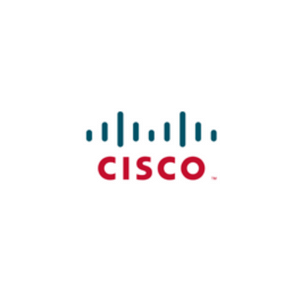Insights
INSIGHTS
All Topics
How to measure trust
02 Aug 2023by Paul Rubens
We look at how you can define trust, measure trust, and explore ways of increasing trust
Trust is the lifeblood of every charity. Without it donors won’t give their money, service users won’t come for help, and other organisations won’t form partnerships.
Lessons from business
To get an idea of the extent to which trust (or lack of it) can impact an organisation, it’s helpful to look at the corporate world. According to research reported in the Harvard Business Review, 88% of customers that have a high level of trust in a company or brand say they will buy again, and 62% say they would buy from that company exclusively.
High trust companies are also two-and-a-half times more likely to be high-performing revenue organisations, and 79% of employees who trust their employer are more motivated to work and less likely to leave.
Repeat donations, high-quality services
What does this mean for your charity? Although the precise percentages may be different, what’s clear is that charities with a high level of trust are more likely to find that donors are willing to donate again, and some may donate exclusively to that charity. These charities are also likely to be high performing in terms of the services they offer, and their employees (and volunteers) are more likely to be motivated and loyal.
The conclusion of all this is that trust is an important concept for your charity to monitor, nurture, and increase whenever possible. It also means that your charity needs to take care not to lose the trust that it has earned, and to take steps to restore trust if anything has the effect of diminishing it.
Defining and measuring trust
Before measuring trust, it’s helpful to come up with some sort of definition of it. The HBR suggests that “trust is built when an organization makes good promises and then delivers on them.”
It’s a useful definition, and it begs two vital questions: how can your charity measure something as abstract as trust, and what steps can it take to enhance the trust it enjoys from its constituents?
One approach that your charity can use to measure trust is to ask its constituents how they feel about things closely correlated with trust. For example, after interactions with constituents you can ask them for a constituent satisfaction (CSAT) score.
This is a rating of one to five, and it’s a system used by many well-known organisations such as Trustpilot and Tripadvisor. Asking for a CSAT score is easy to do on web pages or in follow up emails, but its limitation is that scores tend to be coloured by the most recent interaction.
Another technique your charity can use is to ask constituents for what’s known as a net promotor score or NPS, which measures loyalty. This is a score between 1 and 10 based on how likely they are to recommend your charity to a friend.
Broadly speaking, someone who gives a score or 6 or lower is a detractor, someone who scores 7 or 8 is neutral, and someone who scores 9 or 10 is likely to be satisfied with your charity and to feel enough loyalty that they would promote it to friends.
A third technique is to ask donors if they are likely to donate again to your charity, at some suitable time after an initial donation, which is another good indicator of trust.
The point of all three of these techniques is to measure something – satisfaction, loyalty or repeat donations – which is correlated to trust. By measuring these you can, albeit indirectly, measure trust.
Analyse your data
Another indirect way to measure trust is to perform some data analytics on your charity’s own data. For example, imagine your charity receives donations at a certain level every year. But after a cyber security breach donations fall by 10%, and after a high-profile project which fails to deliver on its aims you experience a 50% fall.
From this, you might reasonably infer that both cyber security breaches and failed projects result in a reduction in trust, and that delivering successful projects is more significant when it comes to maintaining trust than cyber security. There’s not necessarily a 1:1 relationship between trust levels and donations, but they are clearly related.
Enhancing trust in your charity
There’s little point in trying to measure trust if you can’t take steps to maintain or increase it. And here it’s useful to look at what consultants at Deloitte Digital call the four factors that make trust: “humanity” and “transparency,” which together communicate intent; and “capability” and “reliability,” which together demonstrate competence.
Using their “HX TrustID” methodology, you can use a survey to ask constituents to agree or disagree with four statements:
- Humanity: your charity demonstrates empathy and kindness toward me and treats everyone fairly
- Transparency: your charity openly shares information, motives, and choices in straightforward and plain language
- Capability: your charity offers high quality services (or products)
- Reliability: your charity consistently and dependably delivers on its promises
The answers to these questions can be helpful as indicators of where your charity needs to work to increase the levels of trust it enjoys, and to get all the benefits mentioned earlier that go hand in hand with increased trust.
For example, if there is significant disagreement with the “transparency” statement then improving your communications could lead to a worthwhile increase in trust.
On the other hand, if “capability” is revealed to be the biggest problem then you may need to take a long hard look at whether you are offering the right services to your constituents – and offering them in the right way.
One final thing to bear in mind: trust takes a long time to earn but is quickly lost. Measuring and managing the trust your charity enjoys is a much surer path to success that losing it and having to earn it all over again.
More on this topic
Recommended Products
23 Dec 2024by Laura Stanley
What is the most secure way to send documents?Sponsored Article
19 Dec 2024by Christine Chiu
How to recruit digital volunteers
Our Events
Charity Digital Academy
Our courses aim, in just three hours, to enhance soft skills and hard skills, boost your knowledge of finance and artificial intelligence, and supercharge your digital capabilities. Check out some of the incredible options by clicking here.



















